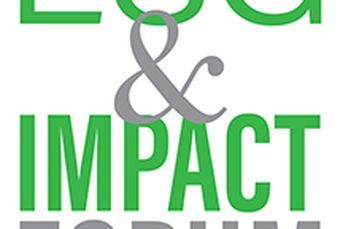Prepare clients for the high costs of college
Higher education is expensive—frighteningly expensive. For most parents, providing for their children’s college education is second only to…
Higher education is expensive—frighteningly expensive. For most parents, providing for their children’s college education is second only to retirement as their largest investment goal. But even with diligent saving, the first tuition bill may be a shock to your clients, so you may want to keep a jar of smelling salts on your desk just in case.
How can you help your clients face this fear head-on? It’s all about creating a solid plan. With a proper plan in hand, you and your clients will be better prepared to tackle college tuition bills in an organized and financially sound way. Sallie Mae recently published research1 that reports families are paying less out of pocket for college as they take advantage of scholarships and grants.2
Vanguard’s new research, Tackling the tuition bill, provides a practical framework to help you develop a plan with your clients. In this post, I’ll explore the factors that affect financial aid eligibility and provide tips on how to help your clients maximize federal tax perks while also considering how to spend tax-efficiently from assets earmarked for college.
As you know, household assets and income affect financial aid eligibility, but these sources are not treated equally, based on whether they come from the student or the parents. The graphic below summarizes the key points—income matters more than assets, and student income matters more than parental income.
The potential impact of student and parental income and assets on financial aid
For every additional $1,000 of income, need-based financial aid could be reduced by up to:
/assets/docs src=”/wp-content/uploads2017/06/CI11066266.SVG”
Parental
• Employment and business income
• Traditional IRA distributions
• Dividends and capital gains distributions
• Realized capital gains
• Retirement contributions
/assets/docs src=”/wp-content/uploads2017/06/CI11066466.SVG”
Student
• Same categories as parental income
• Trust income
• “Gifts“, including 529 distributions from grandparents or other non-parental relatives
For every additional $1,000 of assets, need-based financial aid could be reduced by up to:
/assets/docs src=”/wp-content/uploads2017/06/CI11066966.SVG”
Parental
• 529 savings owned by parents or dependent student
• Coverdell ESA savings
• Taxable savings and investment accounts
/assets/docs src=”/wp-content/uploads2017/06/CI11066866.SVG”
Student
• Taxable savings and investment accounts owned by the (UGMA/UTMA)
• Student-owned Coverdell ESA savings
• Trust accounts for which the student is an owner or beneficiary
Notes: Asset and income categories and how they affect aid eligibility on FAFSA methodology. CSS/ Financial Aid PROFILE institutional methodology takes additional asset categories into account and assesses student assets at 25%. Coverdell ESA refers to Coverdell Education Savings Accounts, UGMA savings refer to Uniform Gifts to Minors Act accounts, and UTMA savings refer to Uniform Transfers to minors Act accounts. FAFSA refers to Free Application for Federal Student Aid, and the CSS/Financial Aid PROFILE, which is required by some institutions and scholarships programs, is administered by the College Board.
Sources: Jonathan R. Kahler, Jenna L McNamee, and Maria A. Bruno, 2016. Tackling the tuition bill: Managing higher education expenses. Valley Forge, Pa.: The Vanguard Group.
So what does this mean? Obviously, individual circumstances will vary, but here’s a savvy strategy to pitch to your clients:
- Spend the student’s assets first. Because student assets affect aid eligibility more than parental assets (oddly enough, 529s owned by dependent children are considered parental assets), it can make sense to spend student assets before spending from a 529 plan. Such an approach gives 529 savings more time to compound tax-free. And by spending the more heavily penalized assets early, students increase their aid eligibility in later years, when inflation may boost tuition costs.
- Tell the grandparents to hold off. Gifts from grandparents and others are considered student income, which has the greatest impact on your student’s financial aid eligibility. As a result, consider tapping those grandparent-owned 529s in the later years of college, when they will no longer be reported or considered in financial aid evaluations.
- Don’t drain the 529 right away. Parent-owned assets, including 529 plan accounts, have more limited impact on aid eligibility. Unless a client plans to pay for the entire degree with 529 savings, it can make sense to spend from this account strategically over the course of a student’s college career. The account can benefit from continued tax-free growth. A client may also be able to time 529 withdrawals to create opportunities for additional aid or benefits.
I realize there’s a lot for you and your clients to think about; but with a bit of knowledge of the rules and some planning, the tuition bills can be tamed.
Educate your clients on potential tax breaks before they tap 529 accounts
Consider the AOTC for the parent, or the child3. Don’t rush to deplete the 529 account in the first year, as there may be some beneficial tax credits available each year. For example, the American Opportunity Tax Credit (AOTC) is available to taxpayers who meet income eligibility requirements. The credit amounts to the first $2,000 spent on qualified education expenses and 25% of the next $2,000, for a total of $2,500. Funds counted toward this credit must come from current parental income or parental-owned assets held in taxable accounts. In other words, they cannot be funds from qualified savings plans, such as 529 plans. This tax credit can be taken each year in which qualified education expenses are incurred for a maximum of four years per student. With a total benefit of $10,000 over the student’s educational career, it may be smart for eligible parents to first take advantage of this credit before spending from 529 accounts.
See if your clients qualify for the LLC or other deductions. Some taxpayers, such as those who have exhausted the AOTC, may qualify for the Lifetime Learning Credit (LLC). This credit is worth up to $2,000 for expenses related to tuition and other qualified expenses for students enrolled at an eligible financial institution4. The credit can be used each tax year and applies to undergraduate and graduate school, as well as programs geared toward professional degrees or expanding job skills.
If they do not qualify for the AOTC or the LLC, the Tuition and Fees Deduction may be another option. For the 2016 tax year, this deduction can total up to a $4,000 reduction in income5.Keep in mind that IRS Publication 970 is a good source for more information on education tax credits and deductions. The figure below provides a brief summary of the most basic information.
Tax benefits may ease both tuition and tax bills
| Criteria | AOTC | LLC | Tuition & Fees Deduction |
|---|---|---|---|
| Maximum credit or benefit | Up to $2,500 credit per eligible student | Up to $2,000 credit per return | Up to $4,000 taxable income reduction per return |
| Refundable or non refundable | 40% of credit | Nonrefundable | NA |
| Limit on MAGI for married filing jointly | $180,000 | $128,000 | $160,000 |
| Limit on MAGI for single, head of household, or qualifying widow(er)* | $90,000 | $64,000 | $80,000 |
| Number of years tax credit available | 4 tax years per eligible student including any years the former Hope credit was claimed | Unlimited | Unlimited |
| Type of program required | • Degree • Other recognized education credential |
• No program required | • Enrolled at eligible educational institution for one or more courses |
| Qualified expenses | • Tuition • Required enrollment fees • Course materials needed for course of study |
• Tuition • Fees required for enrollment or attendance |
• Tuition • Fees required for enrollment or attendance |
| Qualified spending to maximize tax benefit | $4,000 | $10,000 | $4,000 |
| Maximum value of tax benefit | $2,500 | $2,00 | $1,120 |
| * Cannot file as married filing separately and may not be calimed as dependent on someone else’s return. MAGI, modified adjusted gross income. Hope shcolarship credit is a $1,500 macimum federal tax credit program. | |||
Be mindful of tax-sensitive withdrawals
Aside from the potential tax benefits that can be received from paying for college expenses out of pocket, there are tax implications to be aware of when your clients are withdrawing from retirement accounts and taxable savings accounts to pay for college. Withdrawals from parent-owned and student-owned tax-deferred retirement accounts (such as traditional IRA and 401(k) accounts) are taxed as ordinary income6. Withdrawals from parent-owned and student-owned Roth IRAs, on the other hand, can be taken tax free as long as the distribution is composed of the contributions made into the account on an after-tax basis. Withdrawals that represent earnings will be taxed as ordinary income7.
As you’re aware, care should be taken when selling assets from taxable accounts, whether parent-owned or student-owned. Realized gains will be subject to capital gains tax, but they may be offset with realized losses elsewhere.
Although the challenges of paying for college expenses may seem overwhelming to your clients, proper planning is critical to a successful outcome. Remember that bottle of smelling salts I suggested keeping at your desk? Put it away! Remember that balancing financial aid and grant considerations with tax-efficient spending strategies is a good way to help your clients start facing their college financing fears.
*Special thanks to my colleagues Jonathan Kahler and Jenna McNamee for their research contributions.
1 Sallie Mae, 2016. How America pays for college 2016. Accessed October 3, 2016, at http://news.salliemae.com/files/doc_library/file/HowAmericaPaysforCollege2016FNL.pdf.
2 Scholarships and grants funded 34% of college costs in the 2015–2016 academic year, up from 30% the prior year.
3 If the parents’ income exceeds the AOTC limits, but the child is reporting income for that tax year, the child may have the option to claim the AOTC. This would require the child to file as an independent, rather than as a dependent the parent’s tax return. Although this is possible, there may be other financial implications in doing so. The AOTC is refundable up to $1,000.
4 For the 2016 tax year, the Lifetime Learning Credit is worth 20% of the first $10,000 of qualified college expenses. The LLC is not refundable.
5 Only one tax credit or deduction (AOTC, LLC, or Tuition and Fees Deduction) may be claimed per tax year.
6 Withdrawals that meet the criteria of qualified education expenses are not subject to the 10% penalty tax.
7 Roth withdrawals in excess of contributions are not subject to the 10% penalty tax if used for qualified education expenses.
Notes:
Vanguard accepts no responsibility for content on third-party sites or for the services provided. Also, please be aware that when you use services provided by a third-party site, you’re subject to that site’s terms of service and privacy rules, which you should review carefully.
We recommend that you consult a tax or financial advisor about your individual situation.
The availability of tax or other benefits may be contingent on meeting other requirements.
For more information about any 529 college savings plan, contact the plan provider to obtain a Program Description, which includes investment objectives, risks, charges, expenses, and other information; read and consider it carefully before investing. If you are not a taxpayer of the state offering the plan, consider before investing whether your or the designated beneficiary’s home state offers any state tax or other benefits that are only available for investments in such state’s qualified tuition program. Vanguard Marketing Corporation serves as distributor and underwriter for some 529 plans.
Maria Bruno
Maria Bruno, CFP®, is a senior investment analyst in Vanguard Investment Strategy Group. She is part of the team that is responsible for establishing and overseeing the investment philosophy, methodology, and portfolio construction strategies used to support Vanguard’s advisory services, products, and strategies. Ms. Bruno’s areas of expertise include portfolio construction and financial planning, with specialization in retirement planning topics, retirement income solutions, and wealth management strategies. Before her current role, Ms. Bruno worked in Vanguard Personal Financial Planning and Vanguard Advice Services, creating personalized financial plans, managing a team of financial planners, and developing Vanguard’s advice products and services. Ms. Bruno earned a B.S.B.A. from Villanova University.
For more information about Vanguard funds or Vanguard ETFs, visit advisors.vanguard.com or call 800-997-2798 to obtain a prospectus or, if available, a summary prospectus. Investment objectives, risks, charges, expenses, and other important information are contained in the prospectus; read and consider it carefully before investing.
Vanguard ETF Shares are not redeemable with the issuing Fund other than in very large aggregations worth millions of dollars. Instead, investors must buy and sell Vanguard ETF Shares in the secondary market and hold those shares in a brokerage account. In doing so, the investor may incur brokerage commissions and may pay more than net asset value when buying and receive less than net asset value when selling.
Investments in bond funds are subject to interest rate, credit, and inflation risk.
Diversification does not ensure a profit or protect against a loss in a declining market.
Foreign investing involves additional risks including currency fluctuations and political uncertainty.
Stocks of companies in emerging markets are generally more risky than stocks of companies in developed countries.
All investing is subject to risk, including possible loss of principal.
Learn more about reprints and licensing for this article.






